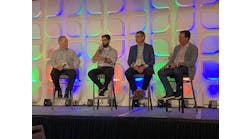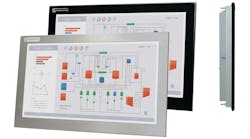Dan Seger, senior principal engineer, Global OEM Group, at Rockwell Automation, knows it’s going to take time for Industrial Internet of Things (IIoT) solutions to evolve.
Seger's role is to focus on machine builders, but he often gets pulled into the end-user side of things, and the two areas often converge. "I see a lot on how technology is evolving, related to how both OEMs and end users leverage it," says Seger. "Much is related to information technologies and where that is going and how it is having a trickle-down effect on each side of the fence."
The impact of analytics and artificial intelligence continues to increase in the manufacturing environment. "Everyone probably understands that technology is being used to improve manufacturing—better quality, less downtime and more efficient systems—but the impact is going a lot deeper than that," says Seger. "Much of my time is spent showing the OEMs and end users how they can work together to use the technology. This includes networking, security and remote access."
The big data and analytics are starting to impact the end users pretty significantly. "We hear about it everyday and are building more products to support the movement in that direction," says Seger. "An offshoot of the desire to build a more efficient system is turning into expectations on the OEM side."
The end user wants to build a highly efficient system, collect lots of data and run analytics to look for subtle trends for improvements, continues Seger. "At the same time, they want the OEMs to be more responsible for the equipment on the plant floor," he says. "We've seen transitions in warranties from failed part replacement for a year to performance expectations such as a machine will operate at a specified percent over a year’s time. It's evolving even further into an expectation on response. If a machine does go down, the OEM must respond within a defined number of hours."
These end-user expectations are changing OEMs’ expectations on what they can do to monitor their installed machines. "Not only is the end user collecting data from the machine, the OEMs are collecting data for real-time monitoring, 24/7, to identify problems before they occur and be more responsive to the customer's needs," says Seger.
The technologies used to do this are built off the same underlying data sets in the control system. "It goes beyond just building a network on the manufacturing floor,” says Seger. “The network needs to allow an OEM to access that system in real time, securely. The end user needs to efficiently get large amounts of data from the system, and the OEM needs secure access to certain data, as well, all in a cost-effective way."
The technology is helping both sides deal with this. "Networking, security, remote access and cloud storage—it's a very fast-moving and evolving space right now," says Seger. "Historically, it has been a smorgasbord of piece parts as nobody has had a comprehensive solution to function as needed in the industrial space. There is a lot of effort going into identifying all the piece parts that were standalone products and how to better build that solution out to tightly integrate the parts to look and feel like a single solution that's easily implemented."
Rockwell Automation has efforts going on to develop its first-generation remote access solution, specifically for the OEM space, to allow them to field machines that have built-in remote-access capability to securely connect to cloud infrastructure that it’s implementing. It will be a secure connection between a machine and the cloud.
"It's more than just a connection, and you need to determine what to do with the data, not just collect it," says Seger. "There are companies out there that have built products to do these secure connections, but, when you look at what the end users require and how they view security, they are very resistive to letting OEMs put those pieces into place on the manufacturing floor. They don't want a dozen different machines with a dozen different connections going to a dozen different cloud solutions. It's difficult for the end user to buy into the belief that they can have a secure environment when they would have that many open doors to the factory network."
What started as “no third party remote connections allowed” is turning into a belief they can build a secure environment and then allow access if the right solution is available. The end user needs a solution it can trust. "It's starting to occur, but it's going to take time," says Seger. "There is a lot of infrastructure needed to support these types of solutions. It's not always publicly visible, such as the hardware components to build secure connections. These things need to be fully vetted to ensure there is no back door into them, and a secure cloud connection needs to be built. Much of this is going on right now. You may not see it as a fieldable solution because on the back end there is significant infrastructure that is being built out in the industry that products can then be built on top of and trusted."






